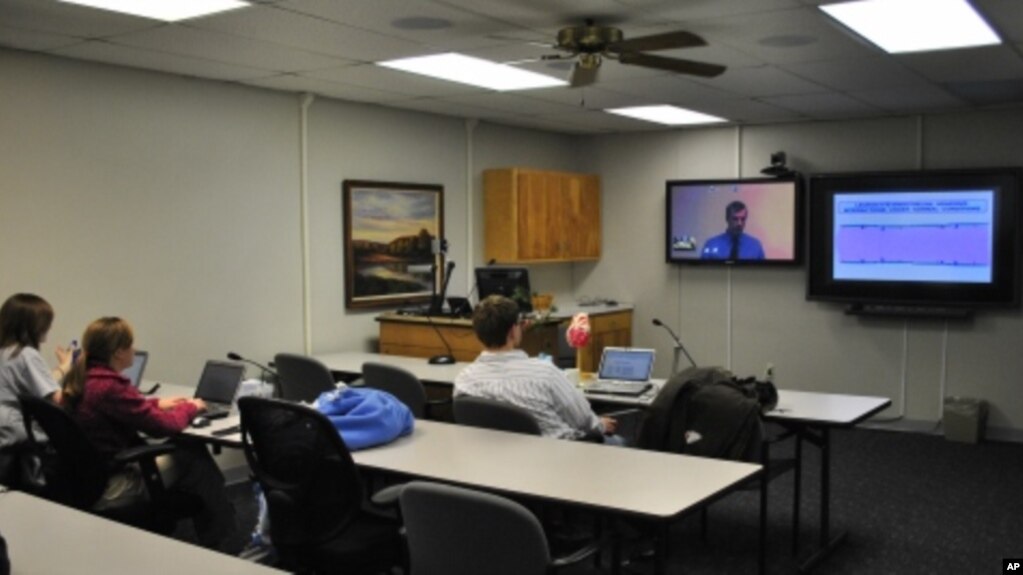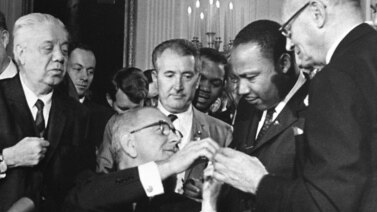
Hello, and welcome once again to “As It Is,” our daily show for people learning everyday American English.
I’m Christopher Cruise in Washington.
Today on the program, some American law schools are helping students graduate in two years rather than the traditional three.
“For some of them it’s because they have a very clear sense of what they want to do when they get out of law school. Maybe they have a job lined up.”
Medical School in Three Years?
But first, if lawyers can do it, why can’t doctors?
Medical schools in the United States traditionally require four years of study. Now, a small number of universities are offering three-year programs.
The VOA’s Bob Doughty reports.
Finishing medical school in three years -- the same as law school -- means new doctors could begin their careers sooner. The reduction of a year could also save up to 25 percent of the cost. That would decrease heavy student-loan debts for some students who borrow money to pay for their education.
Schools offering three-year programs include the Texas Tech University Health Sciences Center and Mercer University in Georgia. New York University in Manhattan is testing a three-year program.
At NYU, 10 percent of the nearly 200 students who entered the School of Medicine last fall were chosen for the new program. Students can change to the four-year program if the faster one is too difficult or too much pressure.
Arthur Caplan is a bioethicist who heads the Division of Medical Ethics at NYU’s Langone Medical Center. He says the current system of American medical education dates back to the early 20th century. An American doctor named Simon Flexner studied the German model of medical education. The Germans divided it into two years of science and two years of supervised clinical work with patients.
Germany’s model was considered the best in the world. American medical schools copied it. But Arthur Caplan says today, medical students should be spending less time in the classroom and more time gaining experience in modern medicine.
“Let’s say, without being silly about it, that there’s a lot more technology to learn and manage in the year 2013 than there was in the year 1905. So the medical model of education that we have is out of date, probably by about 100 years. Too much basic science, not enough clinical doing and apprenticeship, hands-on training.”
After medical school, most new doctors spend at least three years working in residencies in hospitals. Training for some specialties can take much longer.
“Graduate training, specialty training after medical school, is getting longer and longer and longer. So we’re likely to see that continue. It’s not that the overall amount of time in training is likely to diminish. It’s that we’ll give up some time in medical school for more time training in your specialty after medical school.”
Completing medical school in three years requires some additional preparation and summer school. Three-year programs were tried in the 1960s and 70s, but did not last very long. Some medical professors opposed them, and some directors of post-graduate training programs questioned their quality.
I’m Bob Doughty.
Law School in Two Years?
As you heard, some medical schools in the United States are offering future doctors a way to finish in three years instead of four. Some law schools are also offering a way to save a year.
The VOA’s Faith Lapidus has that story.
People who want to become lawyers traditionally attend three years of law school. Like medical students, many law students are deeply in debt by the time they finish their juris doctor, or JD, degree. Those who take out loans borrow an average of around $125,000 to attend a private school. The average for public law schools is about $75,000.
Almost all graduates must pass a bar examination to get a license to practice law. This is a professional test administered by states.
New York University Law School Professor Samuel Erstreicher has written a paper about bar exam requirements. It appeared in the school’s Journal of Legislation and Public Policy. Professor Erstreicher suggests that more students should be allowed to take the bar exam after two years of law school. He notes that this was more common in the past. Supreme Court Justice Benjamin Cardozo and President Franklin Roosevelt both took the bar exam after two years.
Professor Erstreicher also suggests a more professional, instead of a more academic, program of study. Learning more about professional skills, he says, would better prepare a lawyer to serve the needs of average Americans.
Some schools offer a two-year program in addition to three-year traditional courses of study. Southwestern Law School in Los Angeles established a program called SCALE in 1974. It says this is the oldest two-year JD program in the country.
Northwestern University School of Law in Chicago became the country’s first top law school to add an accelerated program. That was in 2009. Northwestern has the same requirements for accelerated students as for three-year students. They must learn the same material and pay the same price as students in the traditional program. Why, then, would someone want to do that? We asked Northwestern’s law school dean, Daniel Rodriguez.
“For some of them it’s because they have a very clear sense of what they want to do when they get out of law school. Maybe they have a job lined up. Or, more likely, they have a strong sense of what their professional career would be. And they may be more urgent – a little bit of a hurry about it.”
Some lawyers argue against two-year programs. They question whether many law firms would want to hire lawyers without that third year of law school.
And that’s “As It Is.” We hope you enjoyed our program today.
And thanks to Bob Doughty and Faith Lapidus for presenting today’s reports, which were written by Jeri Watson.
Every day on “As It Is,” we explore the latest events and report on issues that concern you. We would love to know what you want to hear on the show. Write to us at:
VOA Learning English
Voice of America
Washington, DC 20237
United States of America
Or send an email to LearningEnglish@voanews.com
Or go to our website -- learningenglish.voanews.com -- and click “Contact Us.”
Follow us on Facebook, YouTube and Twitter at VOA Learning English.
I’m Christopher Cruise, and that’s “As It Is” on The Voice of America.




